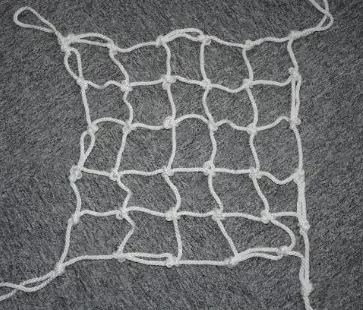Safety Net: The Essential Guard in Protecting Lives and Assets
Safety Nets, a crucial component in the realm of safety equipment, serve as a protective barrier designed to prevent accidents and injuries in various environments. From construction sites to sports arenas, safety nets offer a reliable solution to mitigate risks and protect both individuals and assets.
Safety nets are engineered to save lives and prevent injuries by absorbing the energy of a fall, thereby reducing the risk of fatal accidents. They are made from durable materials such as nylon or polyethylene, ensuring strength and resilience against heavy impacts. The implementation of safety nets is a testament to the commitment to safety and well-being in high-risk environments.
Benefits of Using Safety Nets
The primary advantage of safety nets is their ability to significantly reduce the severity of injuries from falls. They also:
Enhance safety protocols on construction sites and industrial settings.
Provide peace of mind for workers and residents in high-rise buildings.
Offer protection for spectators in sports complexes.
Prevent potential accidents, contributing to a safer working and living environment.
Installation and Maintenance
Proper installation and regular maintenance are crucial to ensure the effectiveness of safety nets. This involves:
Following the manufacturer’s guidelines for installation to ensure maximum protection.
Conducting regular inspections for wear, tear, or damage, and replacing nets as necessary.
Ensuring that safety nets are correctly anchored and tensioned to absorb impacts effectively.
Choosing the Right Safety Net
Selecting the appropriate safety net involves considering the specific requirements of the environment, such as the height of installation, potential load, and the type of activity being protected against.
The Future of Safety Nets
Innovation and technology are driving the evolution of safety nets, with new materials and designs offering higher levels of protection and durability. The future of safety nets lies in the integration of smart technologies to enhance safety measures and provide real-time monitoring and alerts.
Conclusion
Safety nets play a pivotal role in protecting lives and assets across various sectors. By understanding the types, benefits, and maintenance of safety nets, individuals and organizations can make informed decisions to enhance safety measures in their respective environments. Investing in quality safety nets is not just regulatory compliance but a moral obligation to ensure the safety and well-being of all individuals involved.
FAQs about Safety Net
1. What are safety nets in the context of safety equipment?
Safety nets in the realm of safety equipment are protective barriers designed to catch people or prevent falling objects from causing injuries or damage. These nets are commonly used in construction sites, industrial environments, sports facilities, and other settings where there’s a risk of falls or flying debris.
2. How do safety nets work to prevent accidents?
Safety nets work by providing a flexible barrier that can absorb the impact of a falling person or object, significantly reducing the risk of serious injury or death. They are engineered to withstand substantial loads and are strategically placed where the risk of falls or debris is highest.
3. Where are safety nets most commonly used?
Safety nets are most commonly used in construction sites, industrial settings, sports arenas, trampoline parks, and adventure activities. They are also utilized in natural settings such as hiking trails near steep drops to protect hikers from falling.
4. Are there different types of safety nets?
Yes, there are several types of safety nets, including personnel safety nets designed to catch people, debris nets for catching falling objects, and sports nets to protect spectators and property from balls or equipment. Each type is designed with specific materials and configurations to suit its intended purpose.
5. How are safety nets installed and maintained?
Safety nets must be installed by trained professionals according to the manufacturer’s instructions and relevant safety standards. Regular inspections are crucial to ensure that the nets remain in good condition and are securely attached. Any damage or wear must be addressed immediately to maintain their protective capabilities.
6. Can safety nets be used in residential settings?
Yes, safety nets can be used in residential settings, particularly for child safety around balconies, stairs, and pools. They can also be used to protect against falling debris during home renovations.
7. How effective are safety nets in preventing injuries?
Safety nets are highly effective in preventing serious injuries and fatalities when used correctly. They provide a critical last line of defense against falls from height and protect individuals from being struck by falling objects.
8. Do safety nets require special materials?
Safety nets are made from high-strength materials such as polyethylene, nylon, or polyester, designed to withstand the forces of falling objects or individuals. The specific material used depends on the net’s intended use and the requirements of the safety standards it must meet.
9. How long do safety nets last?
The lifespan of a safety net depends on its material, usage, and exposure to environmental factors. Regular maintenance and inspections are essential to extend their service life. Manufacturers typically guide the expected lifespan and maintenance requirements.

thispower
Let's start working together now!
Years of professional OEM experience to meet customised needs. Fill in the enquiry form to cooperate with us and enjoy high quality service.

